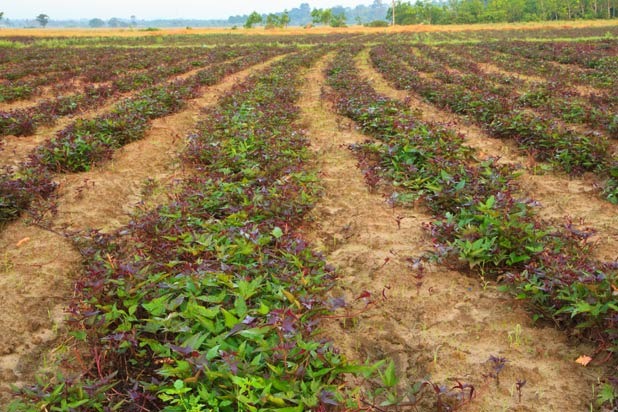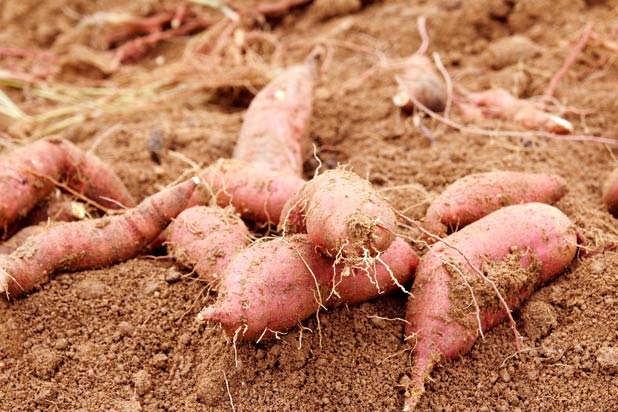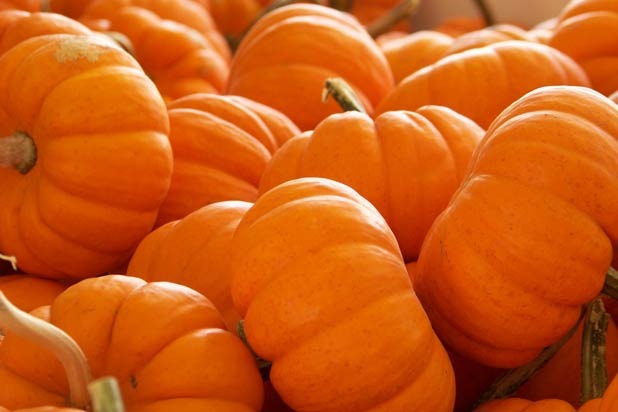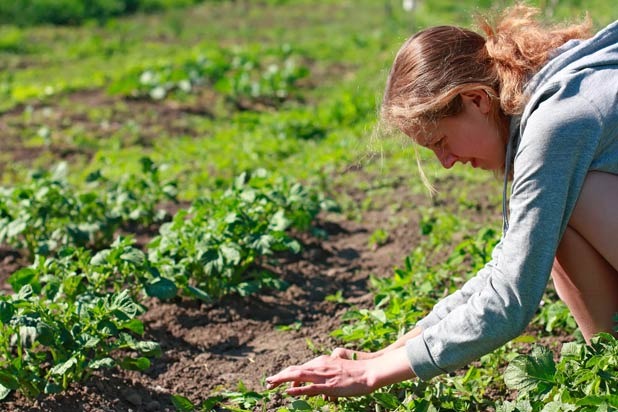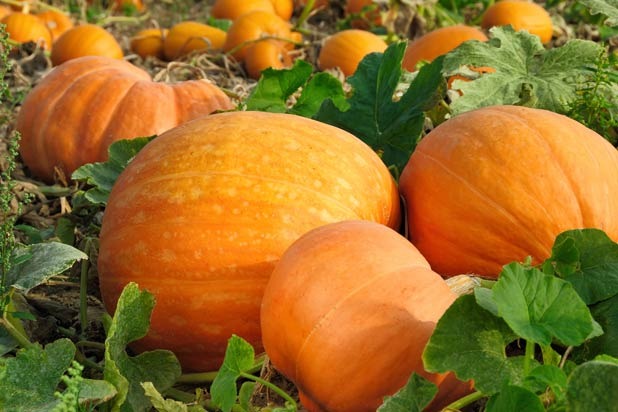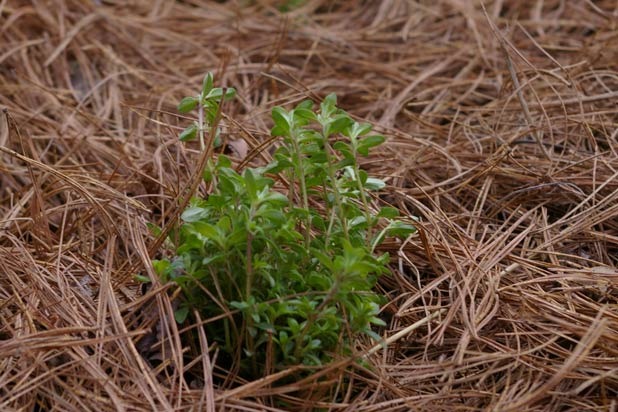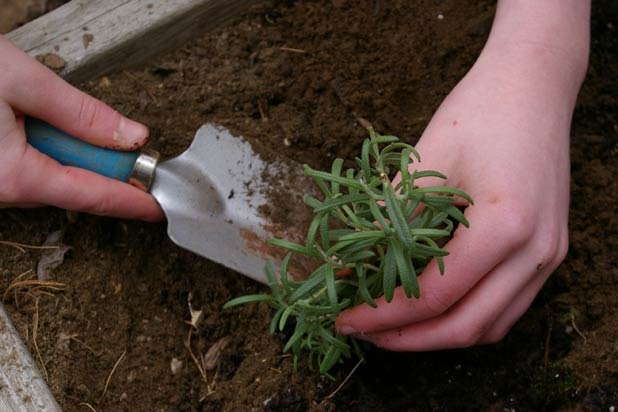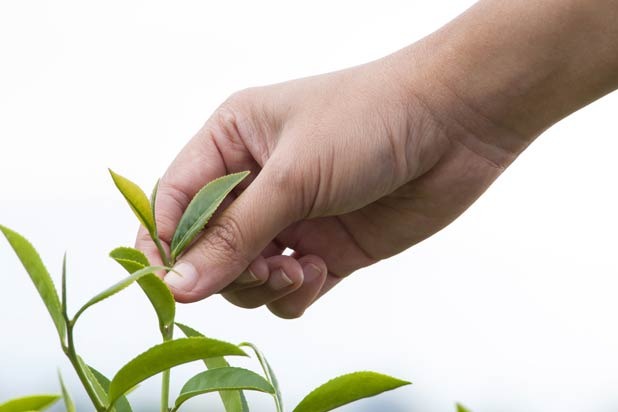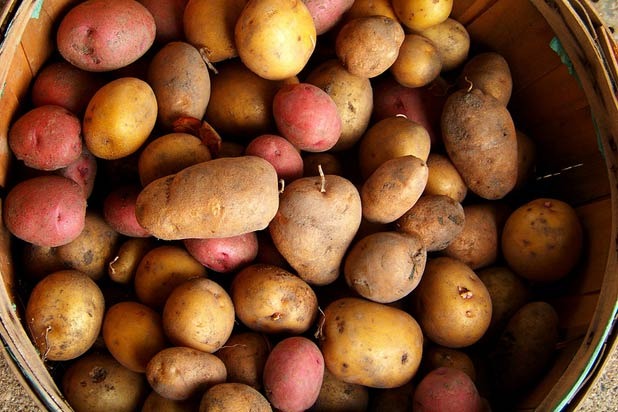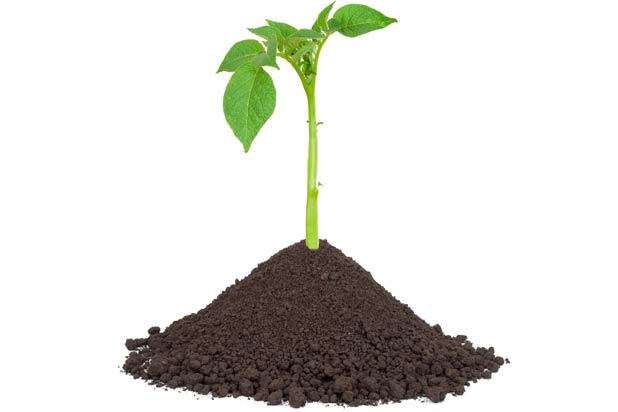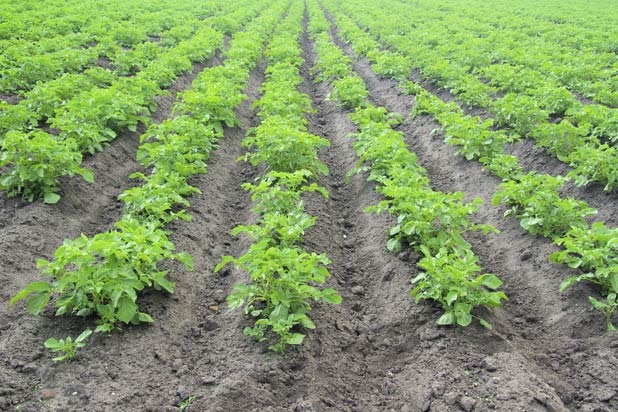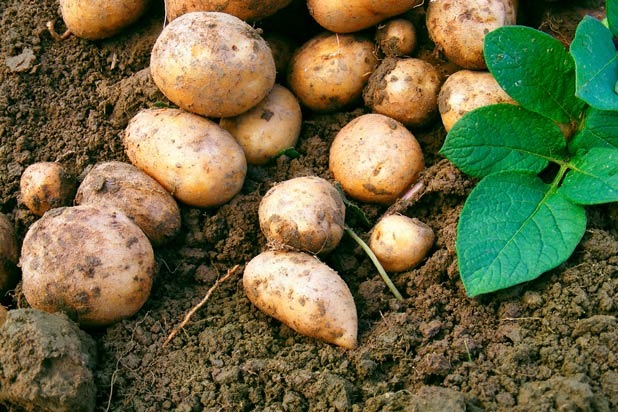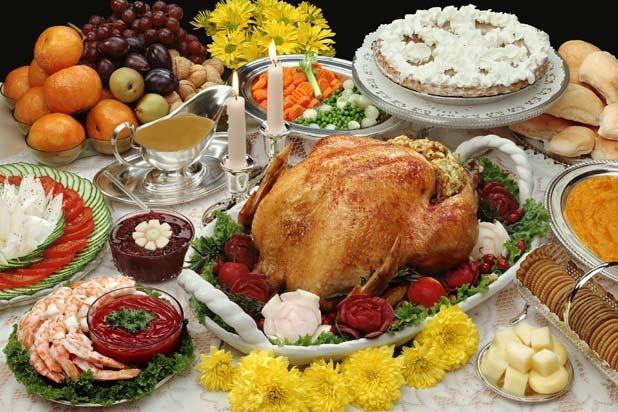How To Grow Your Own Thanksgiving Slideshow
If you're looking for a garden crop that is easy to grow, delicious to eat, and nutritious to feed your family, look no further than the sweet potato. This beautiful tuber and its lovely cascading foliage will be a welcome addition to your garden and your Thanksgiving table.
Sweet potatoes are, by nature, a tropical plant. Sweet potatoes prefer warm, moist climates. In fact, the more heat you can provide your slips, the more productive they will be. Luckily, you can provide sweet potatoes with the environment they crave even if your garden is located in a much cooler location.
Sweet potatoes are grown from "slips," which are young sprouts produced from sweet potatoes or vine cuttings. Sweet potato slips are available from garden centers and specialty online providers. Both hybrid and heirloom varieties are readily available.
Sweet Potatoes: Planting
Sweet potatoes take anywhere from 100 to 140 days to grow, so the earlier you can plant them the better. Prepare your sweet potato bed for planting by creating mounded rows of amended soil 6 to 10 inches high. Use clear plastic to fully cover the mounded soil. The plastic will help to retain the heat from the sun and moisture that would normally evaporate away from uncovered soil.
Sweet potatoes cannot tolerate frost, so make sure to wait until the danger of frost has passed before planting them in your garden. Once the nighttime temperatures are consistently over 60 degrees, the slips can be safely planted. Make a small slit in the clear plastic and gently place the slip in the prepared soil. Gently cover the slip's roots with soil.
Make a slight depression around the base of the plant's stem and place a handful of small pebbles or rocks around the base of the plant. The stones will hold heat from the sun and help to keep the slips warm overnight. They will also discourage weeds from growing around the sweet potato slips.
Sweet Potatoes: Harvesting
Sweet potatoes should be harvested by hand before frost. To harvest the sweet potatoes, gently remove the pebbles and surrounding plastic. Use your hands to expose the tubers below the soil's surface.
Once sweet potatoes have been harvested, they must be cured for storage. Carefully remove excess soil with your hands before curing. Place the sweet potatoes in a single layer in a cardboard box. Cover the box with plastic, making several slits in the plastic to allow excess moisture to escape.
Ideally, the sweet potatoes should be cured by storing the boxes in an 85- to 90-degree environment for five to seven days. Gardeners can provide these conditions by harvesting the sweet potatoes while the natural temperatures in a garden shed, greenhouse, or garage are adequate. If outdoor temperatures are not conducive to curing, the boxes can be placed in a small room or closet indoors and a portable heater can be used to provide the heat required.
This curing process will help to harden the skins, preparing the sweet potatoes for successful long-term storage. Curing also begins the development of the deep earthly flavor that makes sweet potatoes so delicious. A properly cured sweet potato can be stored for several months. Its flavor will continue to improve as it is stored.
Pumpkins: A Dual Purpose
Pumpkins serve a dual purpose during the Thanksgiving celebration, making them a wonderful crop for the Thanksgiving garden. They can be featured in pies as well as savory dishes. Whole pumpkins also make excellent table centerpieces and help bring a natural element to fall-themed decorations.
Pumpkins take about 90 to 120 days to harvest, and can be planted directly from seed in the garden once the danger of frost has passed. Pumpkin seeds germinate best in warm soil; allowing the soil to warm up slightly before planting will encourage the seeds to germinate more rapidly.
Prepare the pumpkin bed by making small hills of garden soil spaced approximately 6 to 8 feet apart. Once the temperature has warmed enough to safely plant, press four to six seeds into the soil on each prepared hill. Water lightly and wait for the seedlings to emerge. Once the seedlings have established themselves, thin each hill by removing the smallest seedlings, allowing the strongest two or three plants to remain.
Pumpkins: Maintaining Your Crop
Pumpkins can tolerate heat and enjoy sunshine. Care should be taken to provide even watering. Regular weeding will ensure that the soil's nutrients are available to the pumpkins instead of being monopolized by unwanted weeds.
The pumpkin's large, bell-shaped blossoms will attract bees and other pollinators to the pumpkin patch and the neighboring vegetable garden. Each plant will produce both male and female flowers. The male flowers will not produce pumpkins, but help to attract pollinators. Female flowers will be accompanied by small fruits, which will develop into mature pumpkins.
Spent flowers will fall naturally away from the pumpkin vine. The fruit will continue to grow and mature throughout the season. Pumpkins are ready to be harvested when they have taken on their final color. Many varieties of pumpkin mature to a deep orange, but white, blue, and other colored varieties can also be successfully grown in the garden.
Pumpkins: Harvesting
No matter the variety, the pumpkin can be harvested when it develops its final color and the skin is firm. The mature pumpkin will develop a hard, protective rind that resists puncture damage. Pumpkins should be harvested before the first frost, preventing the drop in temperature from damaging the pumpkin.
Cut mature pumpkins away from the vine using a sharp knife or pruning shears. Leave a 3- to 4-inch length of stem that will harden as it dries. Taking care not to bruise or damage the outer rind of the pumpkin will help to lengthen its shelf life. Store harvested pumpkins in a cool dry place until ready to use.
Herbs: Instant Gratification
Herbs are simple to grow and provide instant gratification for a gardener who also loves to cook, as the herbs that will add flavor to your Thanksgiving dishes can be enjoyed in the months leading up to the celebration. In addition to being delicious, their blooms can provide a beautiful focal point in your yard and help to attract butterflies and bees to pollinate the other plants in your garden.
Herbs are the perfect plant for the novice or casual gardener, and only take around four weeks to start to grow and be ready for harvesting. They can be grown from seed, but some herbs take years to become well established enough to harvest. Fortunately, herb plants are readily available from garden centers and farmers' markets and can be transplanted into your herb garden.
There are myriad herb varieties available. Chives, rosemary, sage, and thyme are fantastic choices for the Thanksgiving garden. Each of these herbs can be grown as perennials, coming back into production year after year. They can all be planted directly into a garden bed or grown successfully in containers. In cooler climates, these herbs can be brought indoors and overwintered on a sunny windowsill.
Herbs: Planting
Chives have bright green stems adorned with colorful pinkish purple, papery flowers. Rosemary has an upright growing habit and can be grown as a hardy perennial in zones 7 or higher. Sage is known for its beautiful foliage, attractive blue flowers, and delicious flavor. Thyme has a low, dense growing habit and makes a wonderful groundcover in the garden. Thyme can also be planted in a container with other herbs and allowed to trail down the side of the pot.
Select a sunny location with well-draining soil for your herb garden. After the danger of frost has passed, select herb plants to be transplanted to your selected location. While supporting the plant's stem, turn the pot on its side and gently tap the bottom to release the transplant's roots and soil from its container.
Using a small hand shovel, dig a hole slightly deeper than the length of the transplant's roots. Place the roots in the hole and gently fill with the soil from the plant's pot and the soil removed from the hole. Gently firm up the soil with your hands to help provide stability to the newly transplanted herb.
Herbs: Maintenance
Throughout the growing season, these herbs can be harvested and added to your favorite savory dishes. To harvest chives, simply snip a few stems off about 2 inches above ground level. Rosemary, sage, and thyme can be harvested by removing a few leaves from the topmost portion of the plant.
Harvest herbs after the morning dew has had an opportunity to dry or evaporate. Take care to harvest judiciously; more than three-quarters of the plant should be left undisturbed. Doing so will encourage the plant to continue producing well throughout the season.
Potatoes: The Staple
Potatoes are a staple on the Thanksgiving table and can easily be grown using a variety of methods. They can be planted in hilled rows, raised beds, and specialty potato-growing containers. Planting seed potatoes in simple hilled rows is the most basic method of cultivating them in the garden.
Soil quality can greatly impact the potato harvest. Potato plants are known to be heavy feeders and will fail to thrive if their soil does not provide the nutrients they require. Amending the garden soil with compost will encourage the plants to be vigorous and produce a larger yield of potatoes.
Potatoes: When to Plant
Potatoes are grown using seed potatoes are available at local garden centers and through online retailers. Like pumpkins, potatoes take about 90 to 120 days to harvest, and prefer to be planted in cool weather, and can be planted in the garden once the danger of frost has passed. If you need to hold your seed potatoes in preparation for planting, place them in a paper bag in your refrigerator's crisper drawer. Several days before planting, remove the seed potatoes, open the bag, and allow the potatoes to rest on a sunny windowsill. The warmth and sunlight will help the potatoes to awaken from their dormant state.
Potatoes prefer a sunny spot in the garden, although they will tolerate some shade. Prepare the potato planting area by digging shallow trenches 3 to 4 inches deep in the amended soil. The trenches should be placed 3 feet apart to allow adequate space for the plants to flourish and potatoes to be produced below the soil.
Place seed potatoes in the trench, spacing approximately 12 inches apart. Cover loosely with the soil removed when digging the trench. Water the potato bed regularly. It won't be long before green shoots will emerge from the soil.
Potatoes: Maintenance
When the plants have grown to be about 12 inches tall, use a small shovel to transfer some soil from between the rows, forming a mound around the base of each plant. Bury each stem until half of the plant is covered. This will encourage the plant to produce additional potatoes and keep the developing potatoes fully covered, preventing them from greening.
Continue this process throughout the growing season until the plant produces flowers. Flowering signals that the potatoes are nearly ready to harvest. Shortly after, the top of the plant will begin to wilt and die off. Once this happens, allow the potatoes to remain undisturbed underground for 10 to 14 days before harvesting them. This period of rest will help to cure the skins and lengthen their shelf life.
Potatoes: Harvesting
Take care when harvesting the potatoes, as the skins will still be tender. Breaking the skin will reduce the potato's shelf life. Using your hands, gently remove the soil from the base of the potato plant. Harvesting potatoes when the soil is dry will help to ensure that the potatoes will store well. Gently brush any clinging soil from the tubers. Do not wash the potatoes.
Use the potatoes immediately or cure them for storage. To cure potatoes, place them in a paper bag and keep in a cool, dry place for one to two weeks. Once the potatoes have cured, they can be stored in a cool, dark place with moderately high humidity for several months. Take care to keep the potatoes away from light. Light will cause the potato skin to take on a green hue, signaling the presence of the toxic substance solanine. Storing potatoes in a paper bag and excluding light will prevent solanine from forming and preserve your harvest.
Need More of a Reason to be Thinking about Thanksgiving?
The Daily Meal is always ready, thinking about, preparing for, and planning how to best prepare for Thanksgiving dinner — the best meal of the year. Read on to learn the 11 Reasons to Talk Turkey Right Now, and check in with The Daily Meal's Guide to Thanksgiving regularly for Thanksgiving planning, coverage, and everything you need to know from Turkey 101 and every stuffing recipe you'll ever need, to making Thanksgiving vegan, gluten-free, or over-the-top. These tips are sure to help make this November's meal the best one ever.
Click here to read 11 Reasons Why You Should Be Thinking About Thanksgiving Dinner Already

